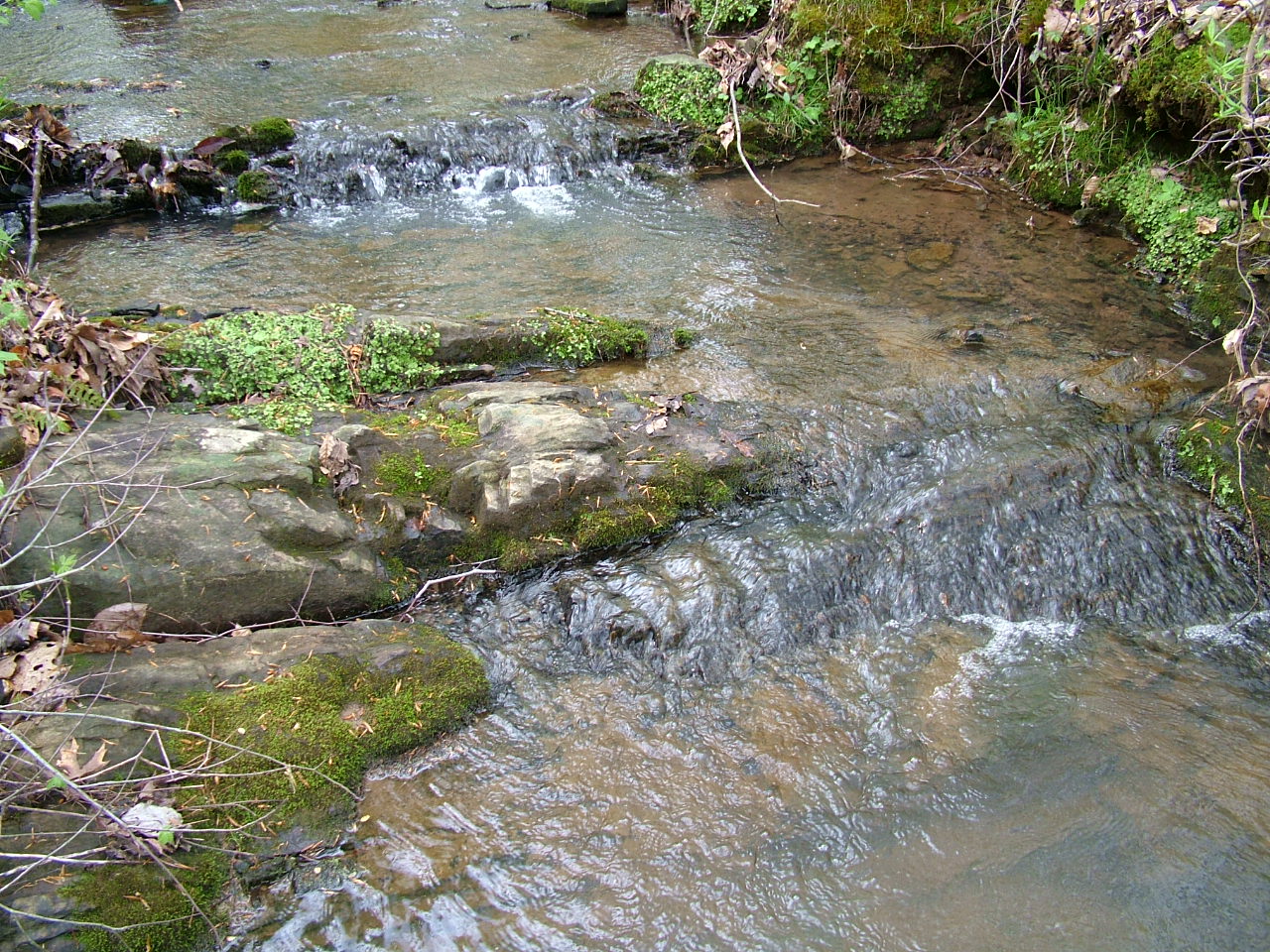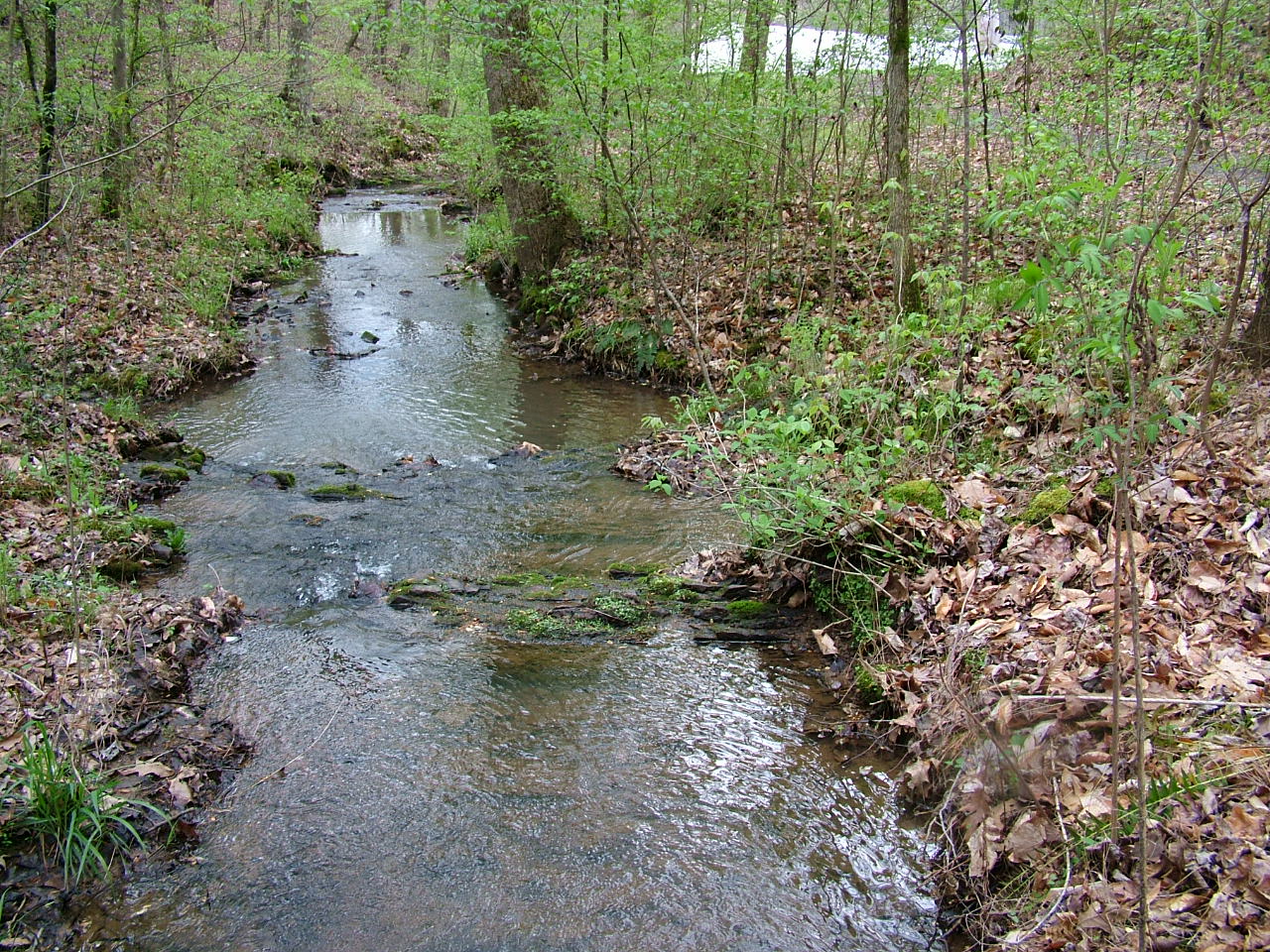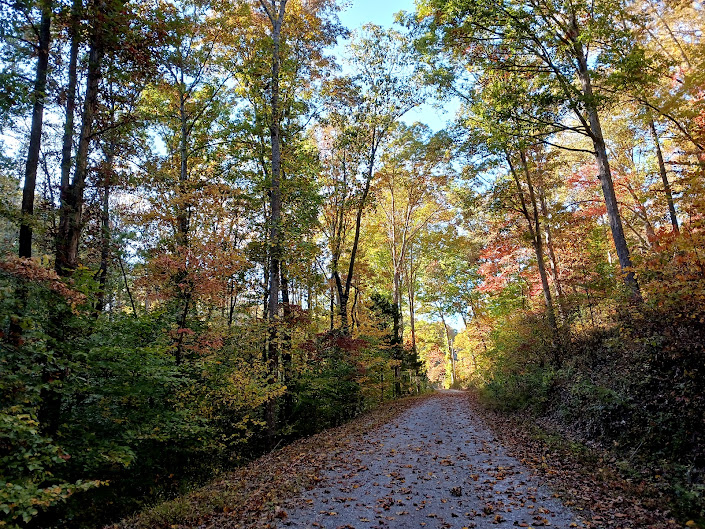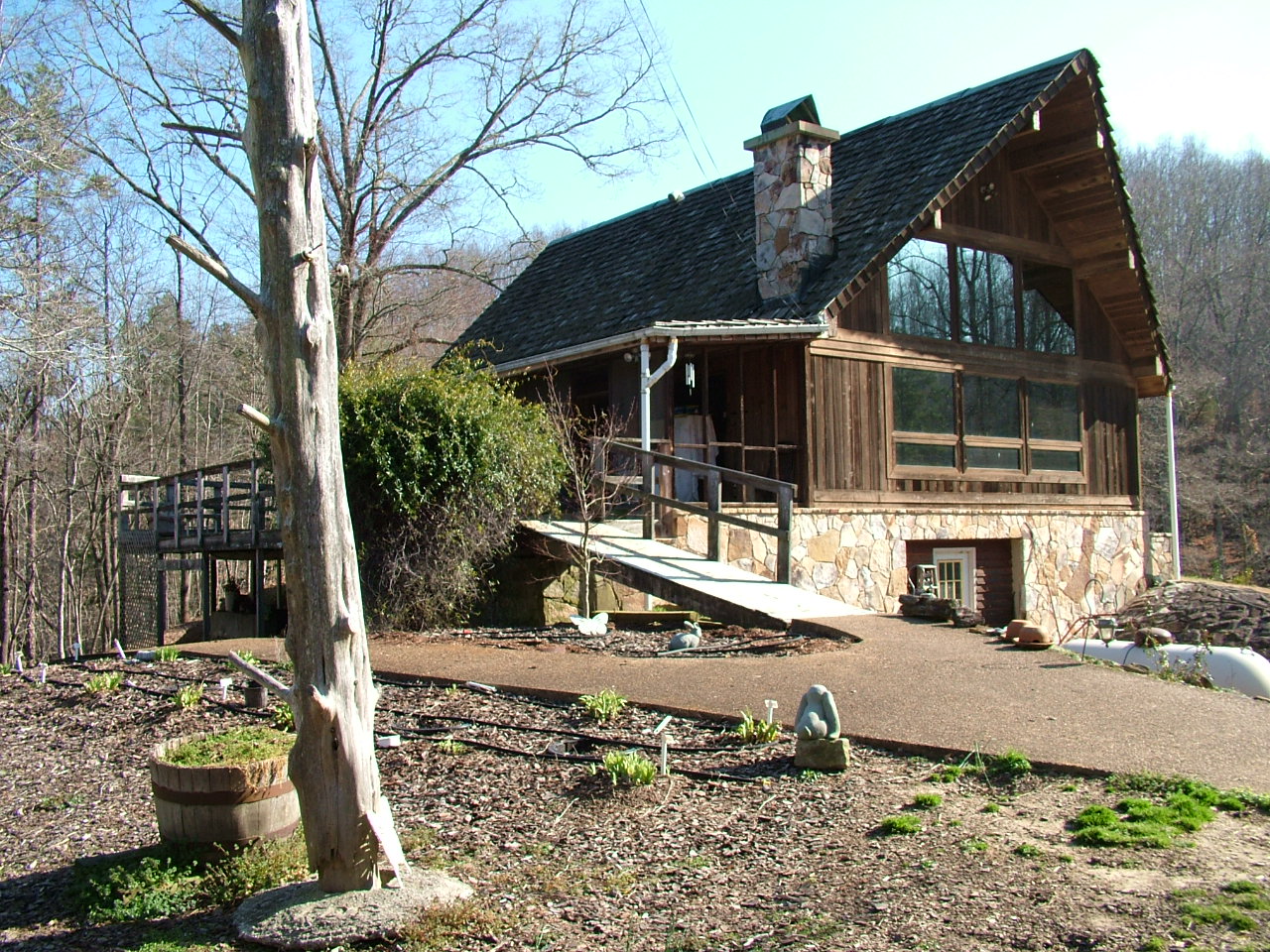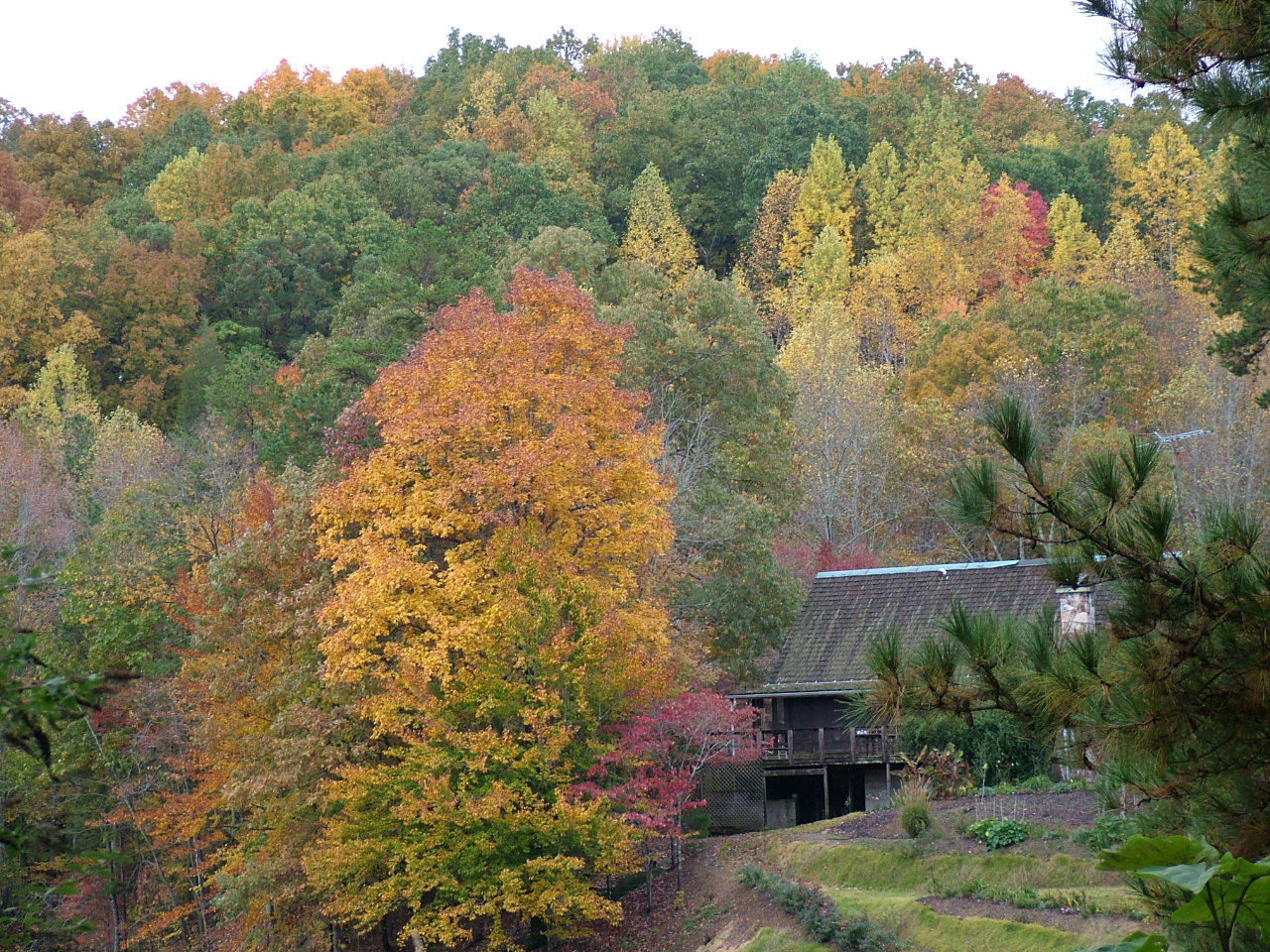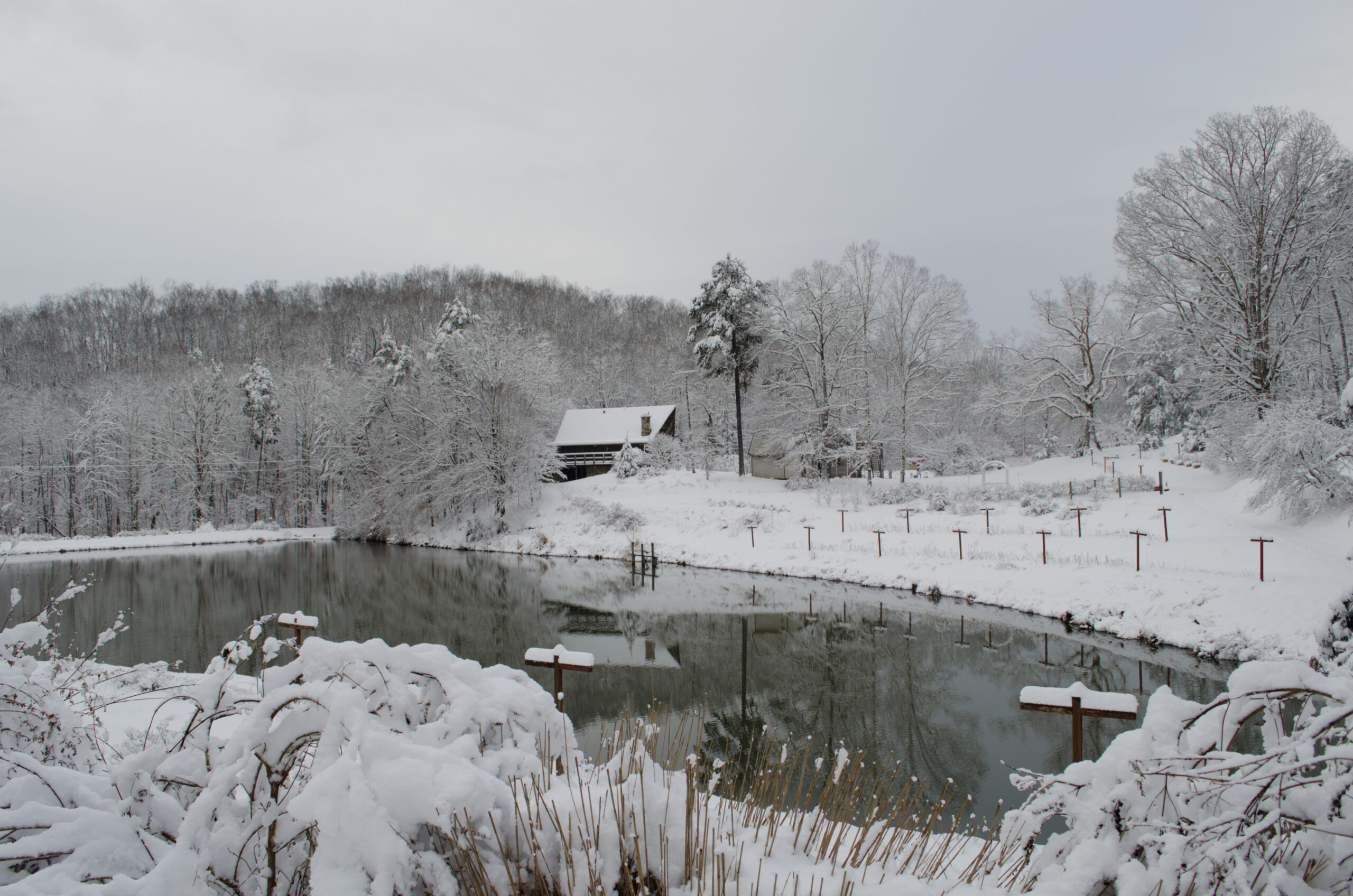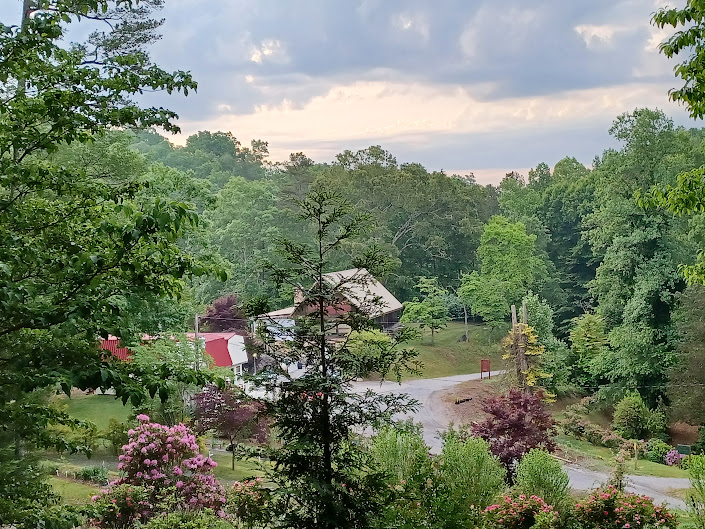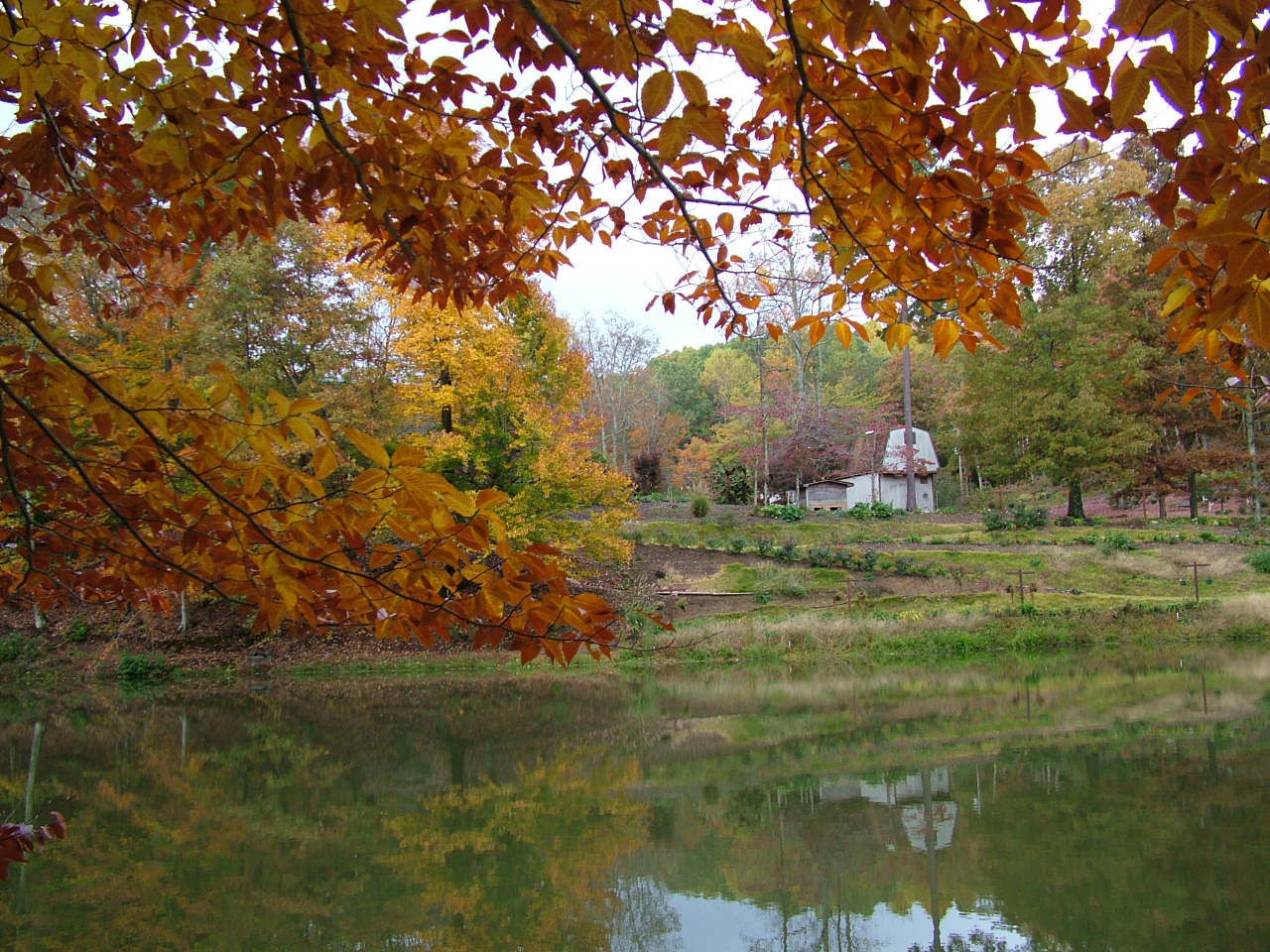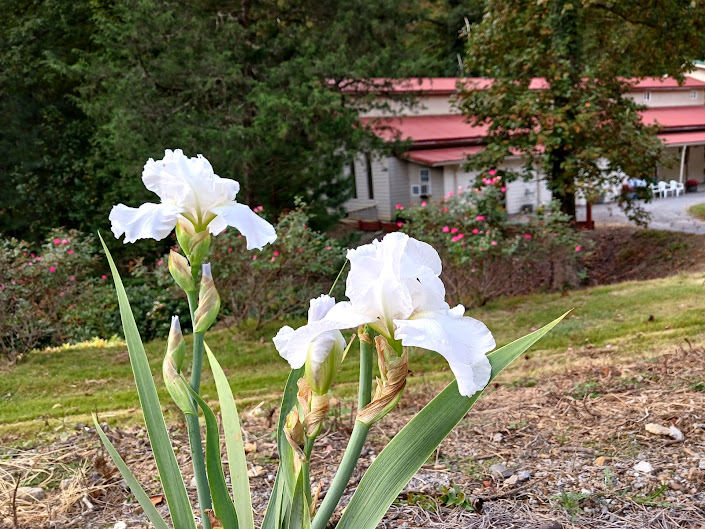Finding the Hollow
In the early 70's, I was looking for property to purchase for a permanent home and a place that could be developed as a place to enjoy and for others to also visit and enjoy. As a trail developer and builder, this was on my mind when I first walked into the Hollow in June of 1973 with a topographic map in hand. I had seen an ad in the local paper and was also told about the property by a friend at Hiwassee Land Company. The first trek was off the County Road and up the creek that flowed out of the area. The creek intrigued me as it flowed over little stone drops and rivulets.
There was no real road so I bushwhacked along the Creek until I reached the point where the narrow gorge widened to a large hollow. The first thing I saw was a huge Kudzu patch that engulfed several acres of the main drain leaving the hollow. Near the beginning of the Kudzu, there was a rotted-down cabin and a dugout place in the bank that looked like an old root cellar. After inspecting that area, I checked my topographic map to see how the hollow drains and hills were oriented. The little point on my left jutted out between two drains so I walked up to that point. From there I could see around the area. It was obvious that the area just West of that point had been a garden or small field of some kind. At that time I thought “What a great place for a home that would overlook the valleys to each side”. At about the same time, using my map, it appeared that the narrow valley below the home site would be a good place for a lake where the dam could be used to cross the valley to reach the home site.
After I had made that initial visit, I met Ira B. Goforth, a neighbor who owned some of the adjoining land. Since no one had even lived in the hollow for thirty or forty years, I asked him if he knew the boundaries of the property. He replied, I sure do, would you like me to take you around and show them to you? A couple of days later, I met him at his house and we started on what ended up being a half-day walk up hills and down hills, passing one spring on the southwest side of the property and then up to the top of a ridge where he pointed out the south-west corner of the property. After that, we followed the western ridge which was the property line. Then to the northwest corner on top of another ridge where the property line turned to the east. Another half mile through the woods brought us back to the ridge that adjoined his property.
After that day I knew that this was the place I had always wanted! Shortly after that day, I approached the current property owners, the McSpaddens, and made an offer, eleven thousand four hundred dollars for one hundred and fifty acres or 75 dollars per acre! No one else had even made an offer, partly because the property was land-locked or had no real access road. After I told the current owners what I envisioned in developing the property, they were very happy that I was buying it. The Goforth's, who have been great neighbors, let me purchase a right-of-way from them to travel through their property to my boundary. After that purchase in 1973, we were able to buy thirty-one acres from the Goforth's that connected the original property to the County Road. That thirty-one acres cost eighteen thousand dollars or $580 per acre.
Entrance Road and Dam
That summer and fall, shortly after the purchase of a thirty-foot wide ROW from the Goforths, George Sims, an engineer friend from Hiwassee Land and I, designed and laid out the road into the main hollow. It was engineered to be high enough above the Creek not to disturb the narrow gorge and in-sloped to keep water from draining into the creek area. Clearing the trees from the right-of-way continued through the Summer and construction began that Fall. After about two thousand feet, the road ended at the point where a Dam had to be built to cross the hollow to the house site.
The next year, Howard Whitaker, the local Soil Conservation Service officer, came to help design and layout the Dam. Later that summer, construction began on the Dam and Lake. Ten days with dozers, wheeled scraper pans, and the movement of 6,000 cubic yards of earth the Dam was finished effectively getting rid of the majority of the three-acre Kudzu patch.
Home
Home construction began the next year in 1975 on the little ridge between the two main hollows and the house was mostly finished by the end of that year.
Except for the block and rock work, a neighbor and I plus a lot of friends build the house. It was finally completed in 1982. The home was somewhat unique in that it was one of the first homes in Tennessee that had:
- Solar Water Heating system using rooftop copper panels with hundreds of feet of ½ inch copper pipe.
- Clivus Multrum Composting Toilet system
- 13,000 gallon cistern to hold water for House Cooling and Heating and a backup emergence water supply.
- Water to Air Heat Pump using water from the cistern and lake.
- Heat Sink system with a 2,000 gallon water tank surrounded by 20,000 pounds of large Sewer Gravel to enable air to travel throughout the Heat Sink room and into the house heating system.
- Pump installed at the edge of Lake to pump water from the bottom of the Lake into the Cistern for the Heat Pump.
- Fireplace with Heatilator shell and fans to blow air into house.
- Fireplace water heating system using one inch galvanized pipe running through the bottom and back of fireplace and copper pipe that transferred the heat collected back into the Heat Sink in the basement.
- Western Red Cedar shake roof, exterior walls, and sub floor.
- Native sandstone corner fireplace
- 325 foot deep well into a Limestone Aquifer that will produce 25 gallons per minute. The water level is about 20 feet from the ground surface or almost artisan. In one extremely dry summer, I irrigated 24 hours a day for over a month. In the extreme drought of 2023 I have done the same.
Most of the paneling and flooring used was Tongue and Groove solid wood. The paneling of almost the entire house was hand rubbed with Tung Oil. The sub-floor is either one and one-half inch tongue and groove Western Red Cedar or Douglas Fir. Exterior walls are constructed with one and one half inch tongue and Groove Western Red Cedar. Flooring in most of the house is three quarter inch tongue and groove Red Oak. The different woods used throughout the house are Eastern Hemlock, Douglas fir, Western red cedar, Western incense cedar, Redwood, Southern yellow pine, Canadian fir, White oak, Red oak, Ponderosa pine, Eastern red cedar and White pine.
Rock work and Chimney were constructed of aged sandstone collected on Bowater Land during Dave's many trips to the Cumberland plateau while working on Pocket Wilderness trails there. They were collected along the roadsides at the end of the day on his way home.
Bakery, Catering, and Weddings
I began baking Fruitcakes for gifts for family and friends in 1967 while serving in the U.S. Army at the Walter Reed Institute of Research. I continued baking when I moved back to Tennessee as I continued my employment with Bowater. After buying the Hollow property and building my home, it made sense to build a small bakery to continue this endeavor. A small bakery (twelve feet by forty feet) was built adjoining the house in 1985 which my wife Vicki helped manage.
Later a new bigger bakery (forty feet X forty feet) along with a sales shop was built just below our home. When I resigned from Bowater in 1988, I began managing the Bakery, and the Garden Business, and in 1995, after a large covered pavilion was built next to the bakery, our Wedding Venue. For many years we sold thousands of Daylilies and Hostas, served lunch to groups and the public, entertained bus tours, and many smaller groups. In 2014 the old Pavilion was taken down and a 5,000 square foot Event Hall was built in its place.
This building was built for Weddings and other events and offers Air Conditioning and Heating plus a Brides Room and other amenities. We also do wedding cakes at our bakery.
Weddings have continued at the Venue although catering for lunches and groups has been discontinued after COVID. We have the oldest fruitcake bakery in Tennessee in continuous operation from the early 1980's. Baking continues for over 55 years now and continues this year although at a much lower level.

